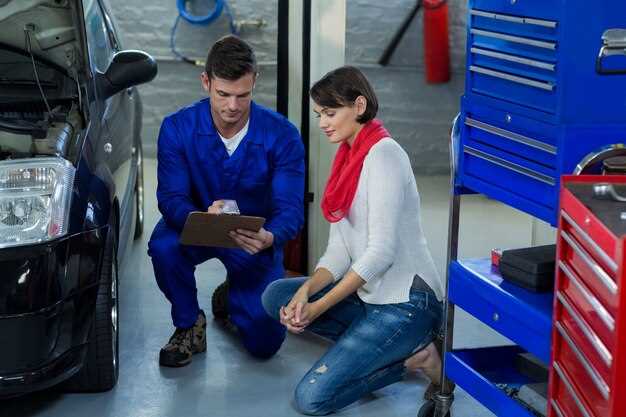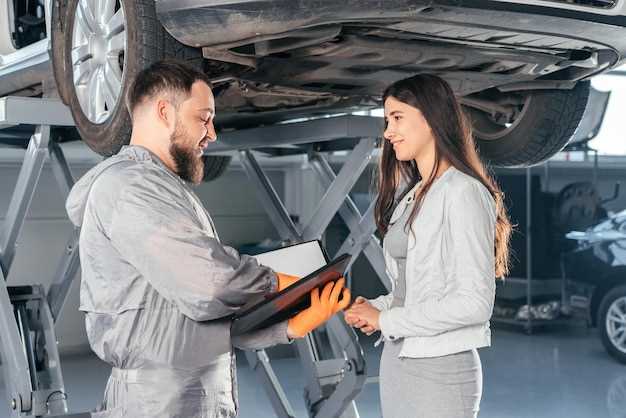
When considering the purchase of a pre-owned vehicle, a comprehensive inspection is essential. This process not only helps to identify potential issues but also ensures that you make an informed decision while investing in a car. Skipping this critical step can lead to unforeseen expenses and complications in the future.
In this guide, we will explore the key aspects of a thorough car inspection. You will learn about the vital components to evaluate, common signs of wear, and how to effectively assess the overall condition of a vehicle. By being well-prepared, you can avoid hidden pitfalls and secure a sound purchase.
From the exterior and interior features to the mechanical and safety elements, each section of the inspection process plays a crucial role. Additionally, we will provide tips on what tools you may need and how to interpret the findings of your inspection. With the right approach, you can navigate the car-buying experience with confidence and peace of mind.
Identifying Key Mechanical Issues in Classic Cars
When considering the purchase of a classic car, a thorough inspection is essential to ensure its mechanical integrity. Key areas to scrutinize include the engine, transmission, brakes, and suspension systems. Each component plays a crucial role in the overall performance and safety of the vehicle.
Start with the engine, which is the heart of any classic car. Listen for unusual noises such as knocking or tapping, which may indicate internal issues. Examine the oil and coolant conditions; excessive sludge or contamination can signal neglect or serious problems. A compression test can provide insight into the engine’s health by measuring the pressure in each cylinder.
Next, inspect the transmission. Look for smooth shifting and listen for any grinding noises during operation. Check for leaks around the transmission pan and inspect the fluid condition. Burnt or discolored fluid can indicate overheating or wear.
Brakes are vital for safety and should be carefully assessed. Examine the brake pads and rotors for wear, and ensure the system shows no signs of leakage. Test the brake pedal feel; a spongy pedal could suggest air in the lines or worn components.
Suspension issues can severely affect handling and ride quality. Inspect the shock absorbers for leaks and check for excessive play in the steering components. Look for signs of rust or damage in the undercarriage, as this can affect the vehicle’s stability and performance.
In conclusion, conducting a comprehensive inspection for mechanical issues in classic cars can help ensure that your investment is sound. By focusing on these key areas, you can make a more informed decision and enjoy your classic vehicle with confidence.
Evaluating the Condition of Classic Car Interiors

When considering the purchase of a classic car, assessing the condition of its interior is crucial. Classic car interiors can reflect the overall maintenance and care that the vehicle has received over the years. Here are several key aspects to evaluate:
1. Upholstery Quality: Examine the seats, door panels, and headliner for any signs of wear, stains, or tears. Authentic upholstery materials can provide insights into the car’s originality. Pay attention to the stitching; frayed or uneven stitching may indicate poor repair work.
2. Dashboard Condition: Inspect the dashboard for cracks, fading, or discoloration. Check for any missing components or gauges that may not function properly. A well-preserved dashboard is often indicative of careful ownership.
3. Carpeting: Look at the carpet for discolorations, wear, and holes. Original carpeting is preferred, but replacement should be of high quality and fit properly. Ensure that the underlying floorboards show no signs of rust or damage.
4. Weatherstripping and Seals: Evaluate the condition of weatherstripping around doors and windows. Old or damaged seals can lead to leaks and water damage, which can affect both the interior and the car’s structural integrity.
5. Accessories and Controls: Test all interior accessories such as radios, air conditioning, and lights. Classic cars may have unique features or controls that should function as intended. Non-functioning parts can be challenging to replace and may diminish the car’s value.
6. Overall Ambiance: Assess the overall feel of the interior. The presence of any odd odors could indicate issues such as mold or leaking fluids. A well-maintained interior should offer a pleasant driving experience.
In summary, evaluating the interior of a classic car involves a thorough inspection of upholstery, dashboard components, carpeting, weatherstripping, accessories, and the overall atmosphere. A meticulous assessment can help identify potential issues and ensure you make an informed decision.
Checking Authenticity and Document Verification

When considering the purchase of a classic car, verifying authenticity and conducting thorough document inspection is crucial. This process ensures you are investing in a vehicle with a legitimate history, free from any legal issues or hidden problems.
Start by examining the VIN (Vehicle Identification Number). The VIN should match on the vehicle’s dashboard, door jamb, and title documents. A mismatch may indicate tampering or fraud. Ensure that the VIN plate is securely attached and shows no signs of alteration.
Next, review the title. Verify that the title is clear and free of liens. A clean title indicates that the seller has the right to sell the vehicle and that there are no outstanding debts attached to it. If the title is branded (e.g., salvage or rebuilt), investigate the implications of these designations on the car’s value and insurance.
Documentation of service history is also essential. Request maintenance records that reveal how the car has been cared for over its lifetime. Classic cars often have unique service needs, and well-documented history can signify a well-maintained vehicle.
Additionally, check for authenticity certificates if available, especially for classic models. Some organizations verify and authenticate classic cars, providing documentation that can enhance the vehicle’s credibility and resale potential.
Finally, consider speaking with previous owners if possible. Conversations with past caretakers can uncover valuable insights regarding the car’s condition and history that may not be reflected in the paperwork. This step often reveals the true background and potential hidden issues.
By methodically performing these inspections and verifications, buyers can gain confidence in their potential purchase, ensuring that their investment in a classic car is both rewarding and secure.




